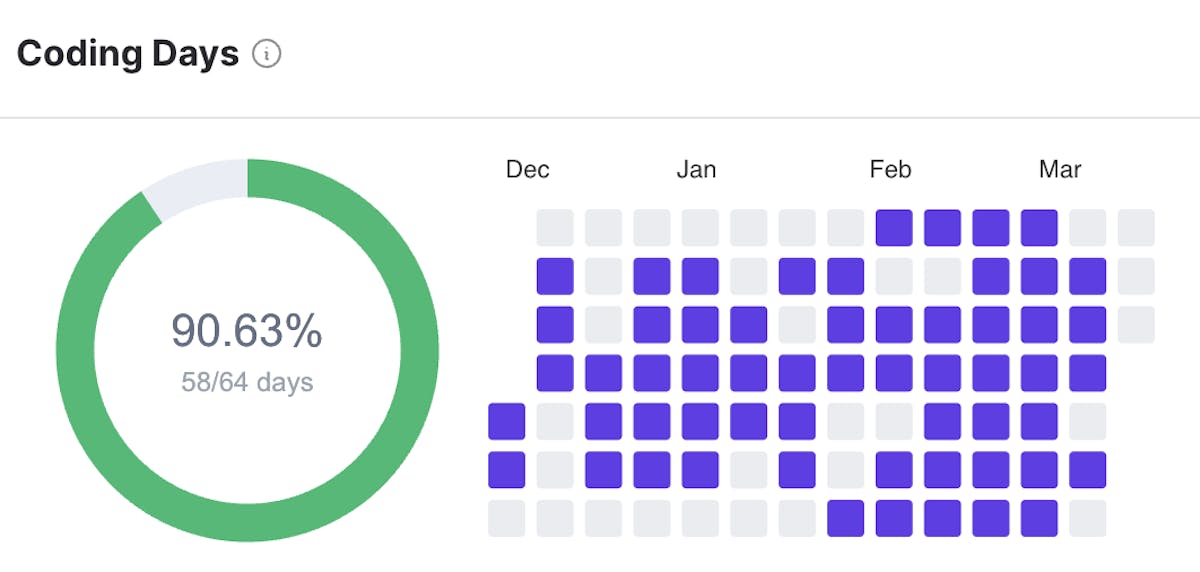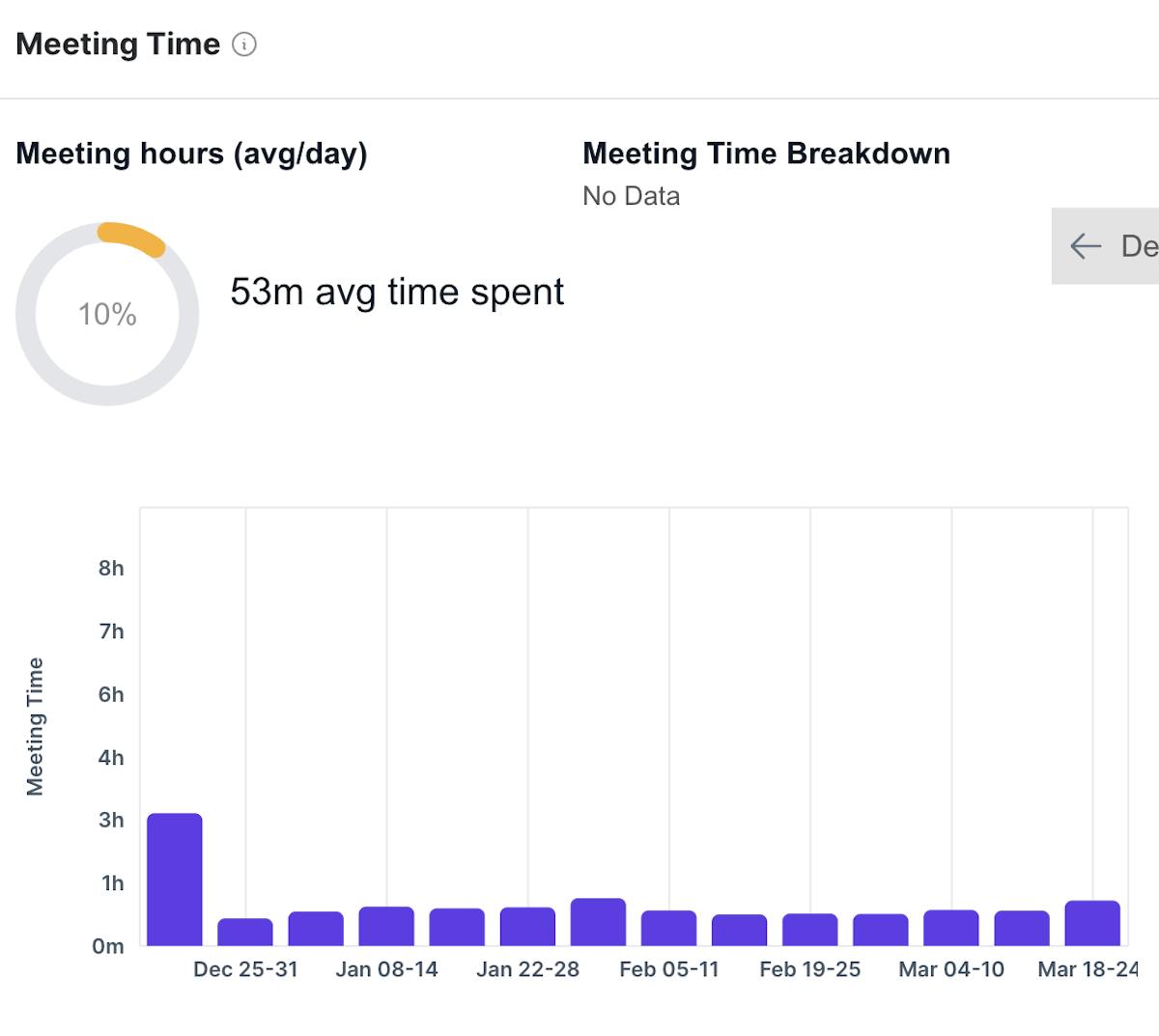Developer burnout poses a serious threat to any engineering team, driven by factors like unrealistic deadlines, unclear expectations, and continuous rework. This issue is critical for engineering leaders as burnout not only affects individual well-being but also leads to decreased productivity, high turnover, and compromises in product quality.
To combat this, a powerful yet often overlooked approach is the concept of data-driven engineering leadership.
By collecting and analyzing the right data, leaders can gain insights into team health, project risks, and process optimization opportunities.
Let's explore how engineering leaders can leverage data-driven insights to fight burnout and cultivate a sustainable, thriving team.
What Are the Causes of Developer Burnout?
Burnout isn't a medical diagnosis, but its signs are familiar to most people, both inside and outside the workplace. It typically starts subtly, with early indicators like cynicism and irritability, eventually leading to emotional exhaustion and detachment, and ultimately culminating in a feeling of reduced effectiveness.
There are two main sets of factors contributing to developer burnout: individual and organizational.
1. Individual Factors
Personal traits like perfectionism or difficulty setting boundaries can push developers to take on too much or stress excessively over details.
2. Organizational Factors
Organizational factors are more common and stem from the work environment. Some of the biggest culprits include unrealistic deadlines, a lack of resources, or constant scope creep can leave developers feeling overwhelmed and unable to complete their tasks.
When developers lack a voice in decisions affecting their work, they feel disempowered. Poor communication, micromanagement, or limited autonomy worsen this feeling. Additionally, a lack of recognition, praise, or growth opportunities can leave developers feeling undervalued.
The cost of ignoring burnout is substantial because it impacts an organization’s ability to retain employees in the long run. Gallup's State of the Global Workplace: 2021 highlights that replacing departing employees costs one-half to two times their annual salary.
So you don't want to wait until the tipping point, do you?
However, before rolling out initiatives, it's crucial to pinpoint potential burnout sources. Here’s where leveraging data to identify the red flags truly makes a difference.
We unpack this below.
Eliminate Burnout with A Data-Driven Approach
It might seem counterintuitive that more data collection can lead to less burnout, but when used strategically, data gives you:
1. Objectivity
Gut feelings and anecdotes have their place. However, data allows you to move past assumptions and pinpoint the real root causes of problems.
2. Early Warning Systems
Data can illuminate patterns before they become crises. For example, a rise in overtime coinciding with a drop in morale signals you need to act.
3. Persuasion Power
When advocating for resources or policy changes to higher-ups, data is your ally. Hard numbers get attention and results.
But here's the catch: when using data to address burnout, context is also very crucial. Quantitative metrics are valuable, but they must be paired with qualitative insights for accuracy and meaningful interpretation. We break this down:
Imagine you notice your team with low motivation for an extended period. Ask yourself: What needs to change?
Here are some proactive steps you can take:
- Investigate why your team lacks motivation. This might lead you to ask certain larger-than-life questions such as -
- Are they in the right environment, working with the right team and company culture?
- Do they have the skills needed to excel? If not, how can you support their development
- Encourage your team to set more challenging goals and take on ambitious projects to reignite their enthusiasm.
- Or is their work going unnoticed and not getting the due attention it should? Often lack of acknowledgement can lead to low motivation as well.
Without intervention, motivation can continue to plummet, leading to difficult conversations about team fit or company alignment down the line.
If you notice your team showcasing low levels of energy, a sudden shift in commitment levels, more folks being absent from key discussions/calls or a pattern of missing timelines - these are indicative that it’s time for you (the engineering leader) to proactively seek inputs from your team, gauge on-ground sentiment and take steps to re-energize and refocus. Understand and acknowledge the team’s concerns and combat burnout effectively.
By using data strategically and taking proactive measures, you can foster a motivated and engaged team environment while preventing burnout.
But where to even get started? What are the right metrics to track? That’s where the next section of the blog becomes very significant.
What Are the Key Areas to Track & Analyze Dev Burn-Out?
Shockingly, 40% of tech professionals are at high risk of burnout, emphasizing the critical need for leaders to address this issue the moment there are signs around in your engineering team.
Here, regularly tracking key metrics can prevent burnout before it gets the chance to spread and fester.
Here are some crucial areas to focus on:
Key Metrics to Spark Early Detection
- Team Sentiment: Regular, anonymous surveys are your secret weapon. Gauge engagement, morale, and perceived workload. Don't just settle for averages – identify trends and outliers that might signal hidden issues.
- Turnover Rates: Are specific teams experiencing an exodus? Investigate why – it could be a red flag for burnout or a bigger problem at hand.
- Hours Worked: Track overtime and extended hours over time. Is this becoming the norm or an isolated incident?
- Rework Rates: Frequent rewrites or last-minute changes suggest deeper problems like communication breakdowns or unclear requirements.
These metrics will help you identify and act on the warning signs. But what about the metrics that will sustainably keep the burn-out problem at bay? We discuss this below.
Extinguishing the Flames: Strategies for a Sustainable Developer Workflow
1. Workload Distribution
Ensuring equitable and sustainable workload distribution is paramount. Utilize project management tools or create a simple workload tracking system to identify potential overallocation. By fostering transparency, you can redistribute tasks and adjust deadlines to create a healthy equilibrium for your team.
2. Context Switching
Frequent context switching disrupts focus and hinders productivity. Analyze the frequency of context switching within your team. Platforms that provide you insights into time tracking or self-reporting can be extremely valuable assets for tracking down this problem. Strategies like grouping similar tasks together for focused work periods and implementing the concept of Flow can significantly improve efficiency and well-being.
3. On-Call Burden
Mitigating on-call fatigue is essential. Track on-call frequency and duration to ensure a fair and sustainable rotation schedule. Explore alternative after-hours support models to minimize the burden on individual engineers and promote a healthy work-life balance.
4. Project Blockers
Recurring project delays can be a major source of frustration. Identify these roadblocks early on. Are you waiting on information from another team? Stuck in convoluted approval processes?
Address the root causes by facilitating communication or streamlining approval workflows. This empowers your team to focus on solutions instead of feeling hindered.
By proactively monitoring these key metrics, you gain valuable insights into potential burnout triggers. This allows you to create a more sustainable work environment, leading to a happier, more productive, and ultimately, a higher-performing engineering team.
While identifying burnout is crucial, it's just the beginning.
The next step is to leverage data as a powerful tool and then apply it in real-time to nurture your team's health and well-being, ultimately boosting productivity and efficiency.
Leverage Data To Build An Empathetic Culture
Let's break free from the shackles of rigid routines and cultivate a workplace that thrives on empathy.
Data is undeniably powerful, but engineers are people, not machines! To truly benefit from data, let's use it to streamline processes, not replace human connection.
The key to leading successful teams lies in the perfect blend of data and emotions. Here's how data can help you build a more empathetic environment:
1. Value Individual Contributions
People thrive when they feel valued. Analyze your engineering team's data to understand their needs, then craft a plan to support them. This shows you care about them as individuals, not just numbers on a spreadsheet.
Data can tell you:
- Someone's burning the midnight oil? Time to champion mental health days and focused work time.





